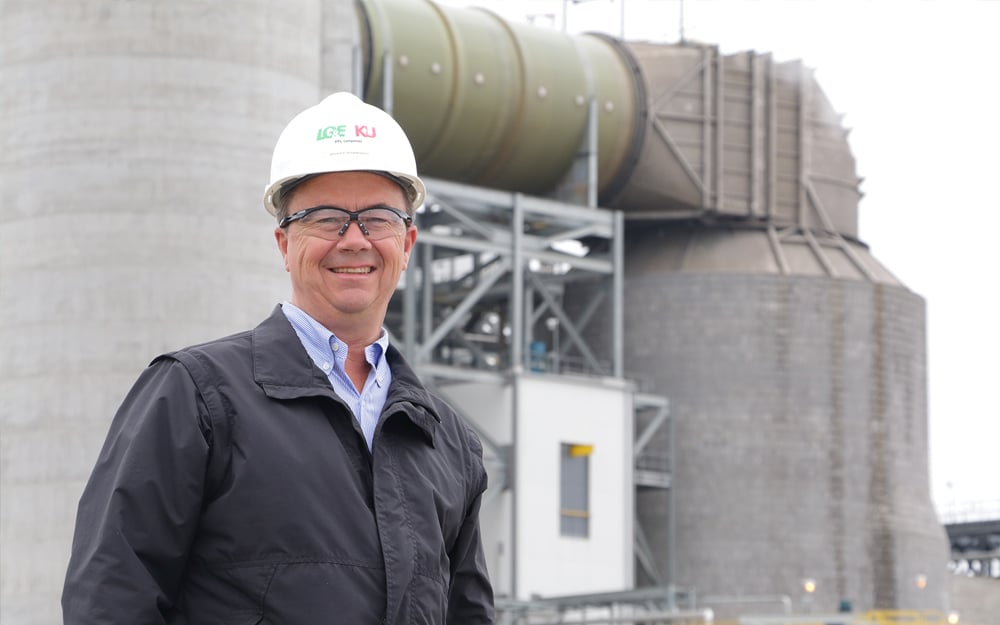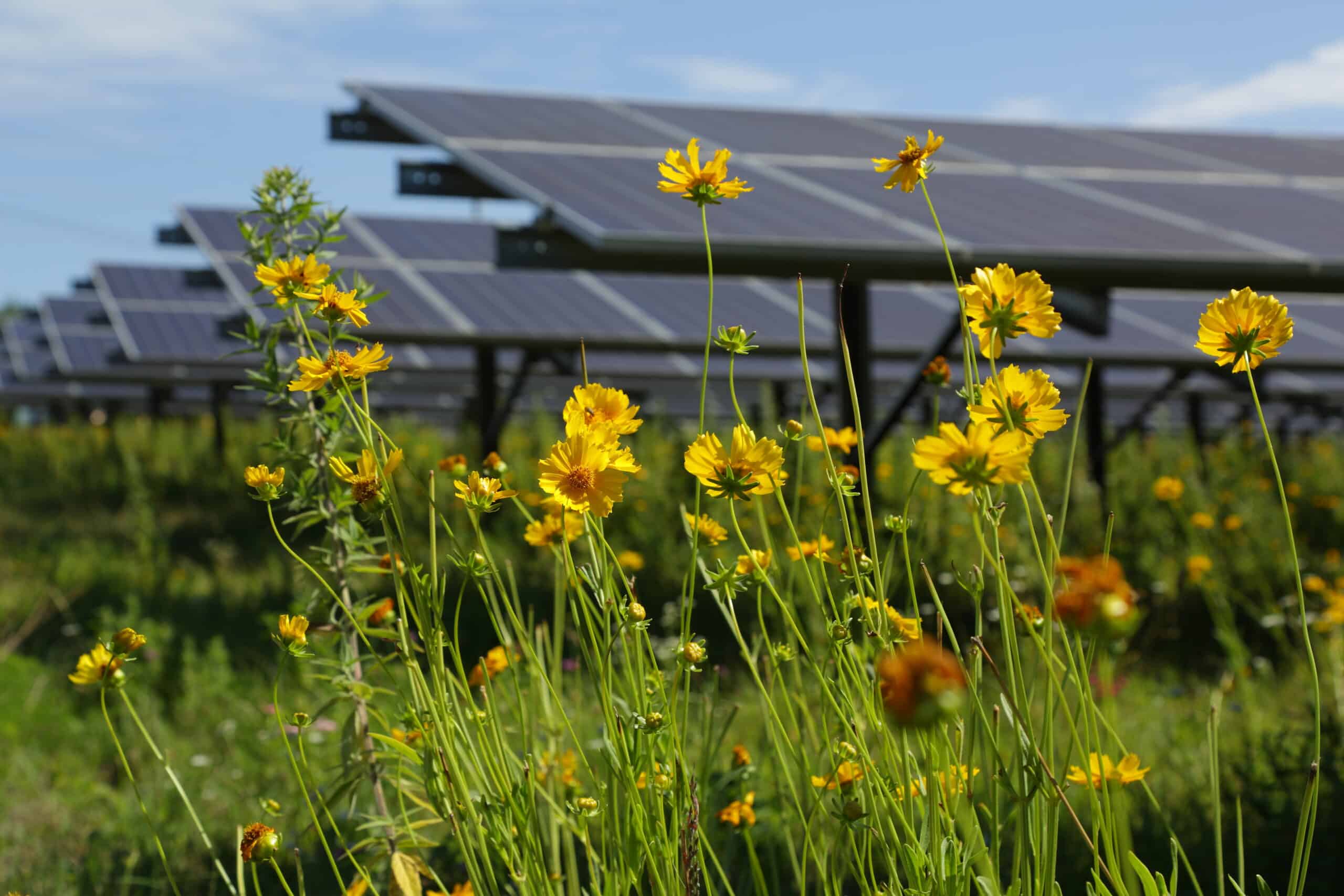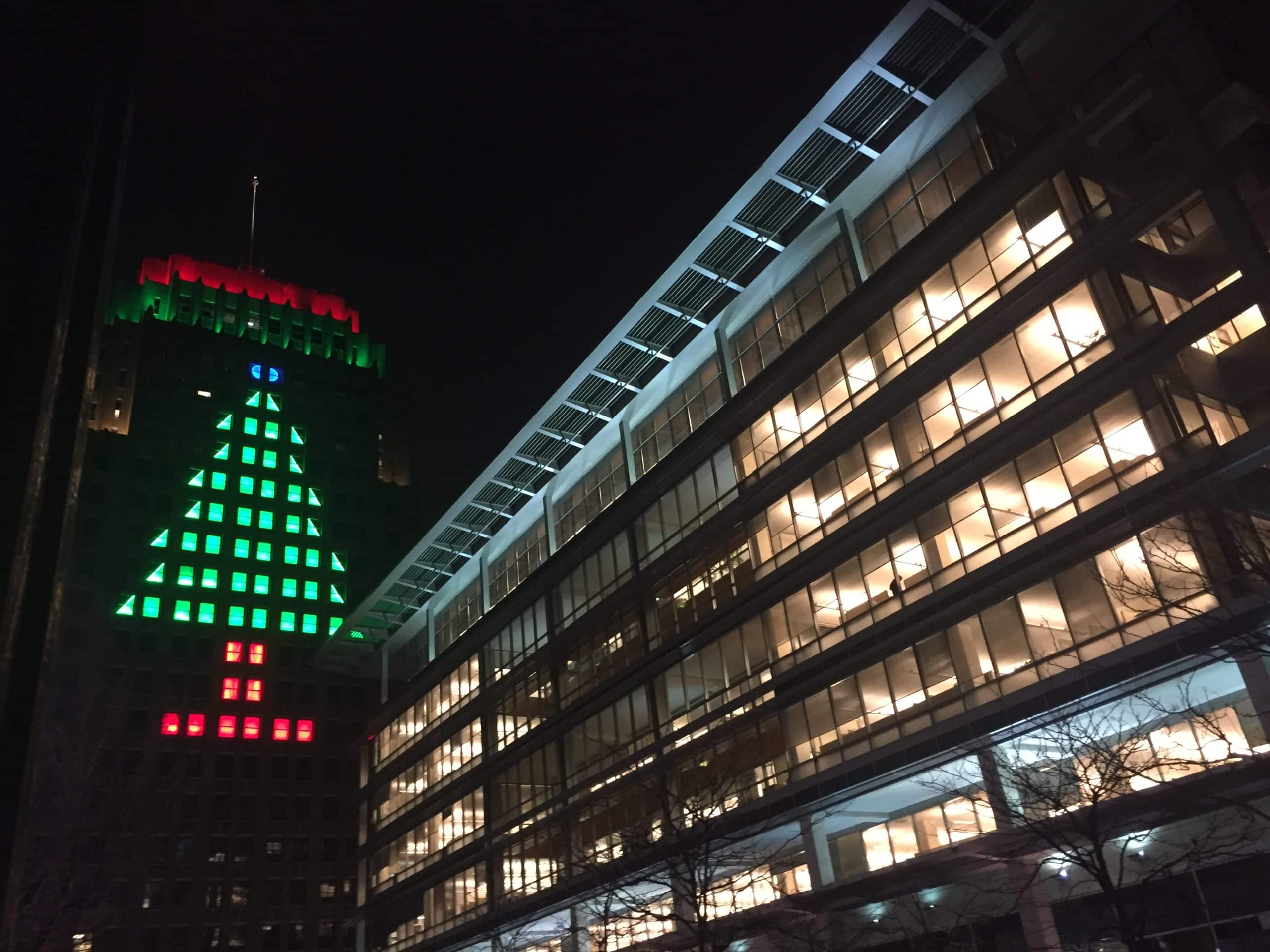Scott Straight is pretty proud — and for good reason. In 2016, the then director of Project Engineering at LG&E and KU oversaw the final stages of a multi-year, $2.8 billion construction project to add environmental controls to four of the company’s coal-fired power plants to further reduce emissions and improve operations. The teams Straight supervised accomplished all of this on time, under budget and with an outstanding performance and safety record.
“I’ve had the good fortune of working on a lot of projects over my 32 years here,” Straight said. “But this was the biggest endeavor. This project involved just about every department in the company. And to be out there and on point with it was a very special thing, especially here in my hometown.”
Straight, who was born and raised in Louisville, Ky., is always conscious of how his work impacts his neighbors.
“Above all, we are always mindful of our customers and how we can best serve them,” Straight said. “This project shows that. We took a balanced approach — we wanted to be compliant with regulations, and we also wanted to reduce our emissions in a cost-effective way while operating safely to provide reliable power for our customers.”
The new environmental controls were installed at the utilities’ E.W. Brown, Ghent, Mill Creek and Trimble County generating stations as part of the companies’ goal to be EPA compliant and reduce emissions. One of the major aspects of the project involved building 10 new fabric-filter baghouses on generating units. These units have been described as “vacuum cleaners on steroids” because they use filters to clean the gas that passes through them during the coal-combustion process.
Planning for the project, which ultimately required nearly 15 million field-hours to complete, began in 2009, ahead of the rest of the industry. “We were proactive in making the changes,” Straight said. “That worked to our advantage because we were ahead of the national curve in buying the technology, which meant we got better pricing and had sufficient time to complete everything.”
That proactive approach and the team’s constant focus on keeping to its schedule enabled the project to come in about $300 million under the original $3.1 billion estimate.
Another noteworthy achievement: Each plant continued normal 24/7 operations during construction to give all LG&E and KU customers’ homes and businesses the power they needed. That required a lot of extra hands. Typically, the Mill Creek and Ghent facilities operate with about 200 workers each day. During this project, staffing at those two plants peaked at 1,700 and 1,600 workers, respectively.
Despite the long duration and massive scope of the project, workers maintained a safety incident record far below the industry average for this type of work.
“It’s a significant milestone for the company to complete projects of this magnitude safely, under budget and on time,” Straight said. “The success is thanks to the hard work of our employees and contractors.”
These are just LG&E and KU’s latest overall efforts to reduce emissions and help promote cleaner air. As a result of the companies’ emissions controls, 2017 sulfur dioxide emissions are expected to be 92 percent less than they were in 1998. In addition, nitrogen oxide emissions and particulate matter are expected to be 77 percent and 90 percent lower, respectively. The companies’ combined actions will also decrease long-term carbon-dioxide emissions.
It’s a change that Straight, now vice president of Project Engineering, is pleased to be part of professionally and personally. “I remember when I joined the company back in 1984 as a young engineer — on clear evenings, you’d look out into the sky and see these brownish streams of gas going through the sky,” he said. “You don’t see those anymore. It’s a dramatic change. I’m proud that LG&E and KU are part of the effort to make our air cleaner.”



